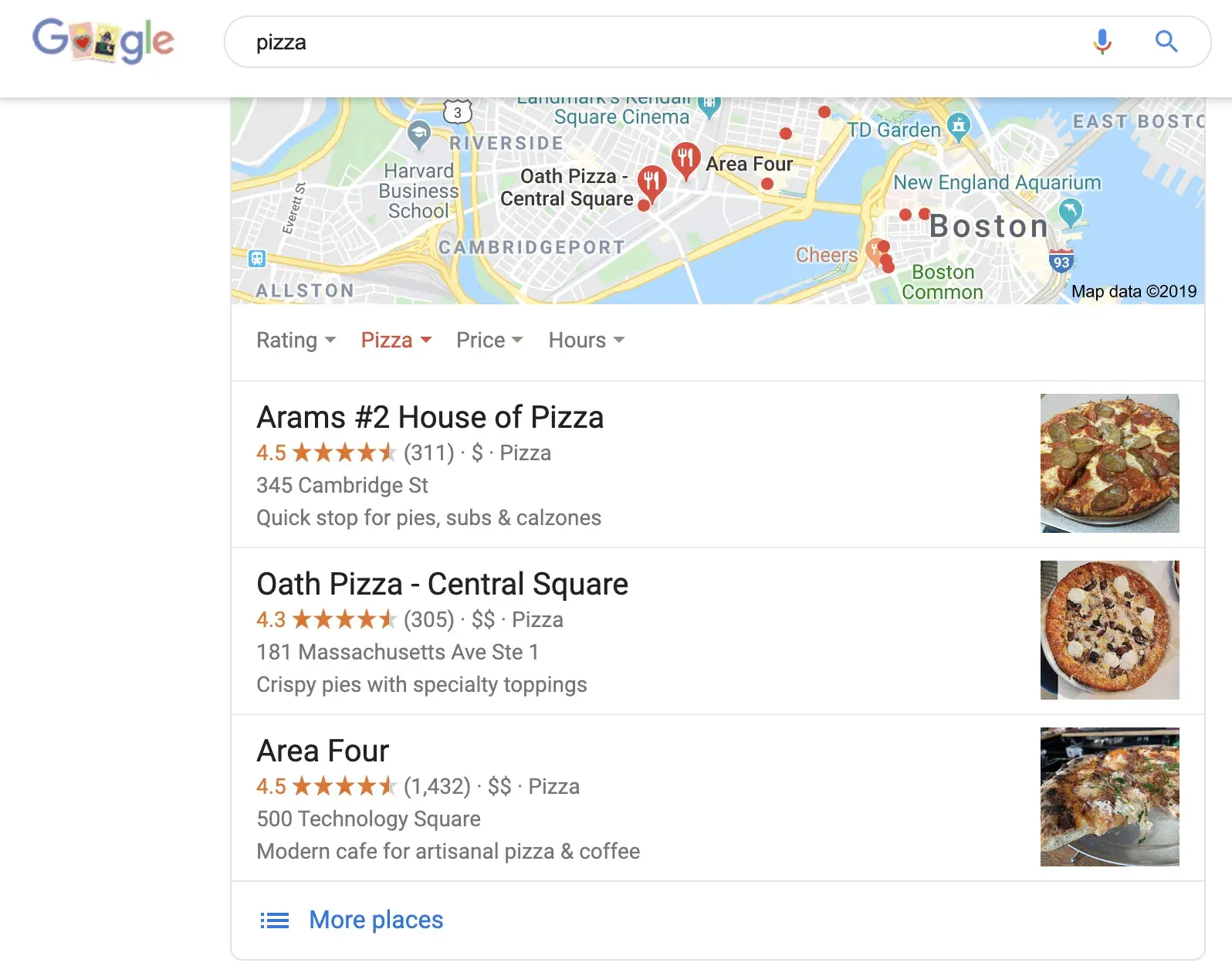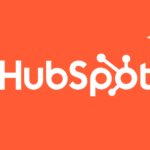Adapting to the New Era of Search: SEO Changes in 2024
- June 4, 2024
- Knowledge Base
- 0 Comments

The reign of keyword dominance is over. How SEO is changing is about to totally rewrite the rulebook. We’re now in the world of AI, chatbots, zero-click searches, and video content.
But what I love most about all these changes is that there’s finally a laser focus on users and what they truly want and need when searching online.
The new landscape may feel unfamiliar, and some updates might look scary at first, but there‘s more potential there than you might think. Let’s dive into how all these SEO changes can positively impact your rankings.
How SEO is Changing
SEO is changing like crazy, and sometimes it seems impossible to keep track of everything that’s going on. While it can feel overwhelming, the core goal is positive: to show only the best content from the Internet.
Here’s a breakdown of the top 10 SEO trends shaping 2024.
1. AEO takes center stage.
The 2024 HubSpot Consumer Trends report shows that a whopping 79% of people rely on search engines for answers.
However, with the advent of ChatGPT, Gemini, and other AI chatbots, no one wants to sift through endless details and jump between sites just to find what they’re looking for. People want answers immediately.
That’s why Answer Engine Optimization (AEO) is more popular than ever before. It delivers direct answers to your questions and uses NLP technology to understand your queries in the same way a human would.
Answer engines gather information from different sources, like databases and even real-time data. But probably the best thing about it? You can ask follow-up questions to delve deeper into a topic.
Here are some tips for a good AEO strategy:
- Combine your AEO with your regular SEO.
- Structure longer content around key questions users might ask.
- Focus on making headings that answer common questions directly.
- Your content must be clear and simple for AI to understand and use.
- Always include FAQs in your articles (if relevant).
2. Hello, zero-click searches.
Something closely related to AEO is zero-click searches. Whether it’s converting currencies, checking restaurant hours, or getting a celebrity bio, users want to access all that information ASAP.
Here are some popular ways of providing information through zero-click results:
- Featured snippets. Highlighted blocks of text pulled from websites that directly answer the user’s query.
- Knowledge panels. Information boxes that summarize key details about a particular entity, like a person or place.
- Direct answer boxes. Boxes that display factual answers sourced directly by the search engine without attributing them to a specific website.
Pro tip: Analyze SERPs to find definition-featured snippets, then target those keywords. HubSpot’s SEO Software can help with this by offering personalized recommendations and optimizing content strategy.
3. Don’t ignore the importance of video SEO.
The way users search for information is changing dramatically, and video is leading the charge.
32% of people reported using YouTube to find answers to their questions online, with Millennials (48%) and Gen Z (45%) being the biggest users.
This explosion in video search makes video SEO an essential element of any modern marketing strategy.
If you want to improve your video SEO, here’s the checklist for you:
- Research relevant keywords and use them naturally in your title, description, and tags.
- Write a compelling description highlighting what viewers will learn.
- Invest in good audio and video for a professional look.
- Captivate viewers in the first seconds with a strong intro — make your hook catchy.
- Use captions/subtitles.
- Create a transcript for your website to boost accessibility.
- Share on social media, embed on your site, and think about influencer marketing.
- Create an eye-catching thumbnail using Canva (or a similar tool).
- Regularly upload high-quality videos to establish yourself as a go-to source.
4. Author entities matter.
With the rise of AI-generated content, trust becomes even more crucial. Our study shows that only about 33% of people trust AI-written content, while the remaining 67% are skeptical or don’t trust it at all.
That’s why SEO in 2024 is placing more importance on author entities. This means search engines focus more on the credibility and expertise of the people who create content.
They want to deliver trustworthy and relevant information to users, and knowing who the author is helps establish this credibility.
Remember the Sports Illustrated scandal, where articles were published under fake authors with AI-generated bios and headshots? This not only resulted in poor-quality content but also damaged reader trust.
That‘s why it’s important to have experts — great writers who can craft authoritative content.
So, create author pages on your website, include writers’ professional photos, detailed bios, and credentials. Highlight their expertise and experience in the field.
Link to their best articles, books, or other publications. This shows readers and search engines their range and quality of work. Include links to their social media profiles to verify their identity and allow your readers to connect.
5. Repurpose your content.
SEO wants more repurposed content this year.
Content repurposing is an excellent way to reach new audiences with your existing material — for example, we wrote this blog post about SEO for Pinterest, and then whipped up a YouTube video, too.
So, how do you repurpose your content effectively? Here are some best practices:
- Check the Google Analytics landing pages report to find high-traffic pages, indicating content that people love.
- Use YouTube Analytics to identify popular videos that can be turned into blog posts or podcast episodes.
- Focus on content that remains relevant over time. Evergreen content like “est ways to clean an iPhone,” can be repurposed multiple times, unlike time-sensitive news.
- Go through your blog and identify posts that are still relevant. Update any outdated information before repurposing.
- Tailor your content to fit the new format.
The biggest advantage of repurposed content is the increased likelihood of landing among the top search results.
That means your blog and YouTube tutorial could both show up when targeting specific keywords. And you’re reaching more audiences — readers, listeners, and viewers alike.
6. Tap into AI SEO Tools.
SEO is getting a major upgrade thanks to AI. One of its best benefits is how much time it saves for SEO managers.
In our survey of over 1,350 marketing professionals, 90% agreed that AI and automation cut down manual tasks, freeing up more time for creative work.
AI tools can also improve ranking, content quality, user experience, and even technical SEO.
For instance, HubSpot AI tools use machine learning and natural language processing to support your SEO efforts. They make it easy to transition between manual and AI-assisted creation, giving you the best of both worlds.
Here’s how the AI tools can help you:
Pro tip: Try out HubSpot’s Blog Ideas Generator. Powered by AI and Semrush keyword data, this tool crafts amazing blog post titles, outlines, and content.
7. It’s never been easier to get penalized.
We all know that avoiding penalties in SEO is essential for maintaining visibility, reputation, revenue, and long-term growth prospects. But it seems that in 2024, it’s more important than ever.
Google rolled out some major updates that hit websites with penalties out of the blue. It caught a lot of site owners by surprise.
Also, Google updates its spam detection systems to improve search quality. If your site is impacted, check Google’s spam policies and make necessary changes.
Fixing issues may help over time, but link spam penalties may not be fully reversed.
What can you do about it?
Well, not much, but adhere to search engine guidelines and prioritize ethical SEO practices to protect your site and keep it growing instead of disappearing.
8. Topical relevance over domain authority.
One of the key shifts in SEO for 2024 is the emphasis on narrow topical relevance. Gone are the days when websites could try to be everything to everyone.
Today, search engines reward sites that show expertise in a specific niche. I love how Erika Varangouli explained it in one of her LinkedIn posts:
And then we have backlinks. They are still crucial for SEO, but the focus is on quality over quantity (but the quantity of quality links matters, too).
Here’s how you can become a “link magnet”:
- Contribute guest posts to high-authority websites within your niche. This establishes you as an expert and earns you a valuable backlink.
- Find broken links on relevant websites and create content that offers a better alternative. Reach out to the webmaster and suggest replacing the broken link with yours.
- Connectively (the new home for HARO) connects journalists with sources. Provide expert insights for relevant queries to earn backlinks from high-traffic news websites.
- Create content that is naturally shareable and linkable — infographics, research studies, or original data analysis.
9. UX becomes an even more important ranking factor.
UX is getting a lot of attention in the SEO world recently.
Interaction to Next Paint (INP) has officially become a Core Web Vital, stepping in for First Input Delay (FID).
This means that websites will now be judged based on how quickly they respond to your clicks and taps, all aimed at making the browsing experience smoother.
For those using Chrome, tools like PageSpeed Insights and the CrUX Dashboard will now give priority to INP over FID.
FID will gradually fade out — but don‘t worry, you’ve got until September 9, 2024, to make the switch to INP.
10. User search intent leads the way.
According to Semrush’s State of Search, Google has totally changed the landscape of SERPs.
User intent is now the driving force behind search engine rankings. Google‘s fine-tuning prioritizes content that fulfills users’ transactional or commercial goals. Informational content isn’t out, but it needs to adapt.
Understanding the “why” behind searches is key. Are users researching a purchase (commercial) or looking to buy (transactional)? Google tailors results to that intent.
SEO needs to follow suit.
Keyword research dives deeper, and content bridges the gap between awareness and action. Think product comparisons, clear buying guides, and informative pieces with a nudge toward conversion.
This is SEO for the customer journey, not just website visits. Businesses create a smooth path from research to purchase by understanding user decision-making and tailoring content.
The future of SEO is clear: prioritize users, and your website will thank you.
Pro tip: To get the most out of your SEO efforts, get the Complete SEO Starter Pack — approved by web designers, hosting providers, and web admins.
How to Adapt to SEO Changes
A “conversion” isn‘t the same for everyone — it’s all in how you define it.
A conversion for a SaaS company might be the act of purchasing a software subscription, while a conversion for a local business might be as simple as a searcher calling their business.
The kinds of conversions you’ll see happening directly on the SERPs depend largely on the types of clients you serve.
So, let’s explore how you can optimize for on-SERP conversions.
1. Local businesses and brands can meet the needs of specific locations.
Google has devoted a huge amount of effort into improving the local search experience for consumers.
Local search results are filled to the brim with special features beyond organic links to a website, with Google My Business (GMB) profiles and “local packs” being two of the most prominent things a local searcher encounters.
For instance, when searching for a “nearby massage studio,” you might come across a Google My Business profile like this one, which includes information on a company’s hours of operation, phone number, address, and reviews from the web.
Again, depending on what a conversion means to you and your clients, both local packs and GMB profiles provide ample opportunity for converstion.
Local packs, shown in the example below, even offer a short list of options based on the business’ proximity to the searcher.

Upon clicking for more info, you‘re given the option to head to the website, find map directions, click-to-call, and sometimes even place an order through a third-party service.
That’s right — for local businesses, there’s an ad-free option to sell your products or services directly in the SERPs.
Now, no one needs to visit your website to find your hours of operation, contact information, or FAQ. Instead, it‘s all laid out for them on Google as soon as they hit “enter.”
In a very real sense, a local client’s Google My Business profile is their new homepage.
There are a multitude of ways marketers can optimize for in-SERP conversions for their local clients:
- Build out accurate listing information for each discrete location to ensure foot traffic driven from search gets to the right place (also a type of conversion!).
- Use Google Posts to promote sales, events, news, products, and special offers to entice both foot traffic and the now-elusive site click. Make sure you have an enticing image that includes a CTA button.
- Reduce friction and create an in-SERP FAQ by answering Google Q&A in GMB profiles.
- Seed common industry questions and answers in the Business Questions section.
- Add UTM tracking to Google My Business profile CTAs to help you accurately report your successes to clients and stakeholders.
2. National and digital brands can harness the power of the low-click landscape.
In-SERP conversions aren’t restricted to your local clients alone. There are several ways certain national and digital-only brands can harness the power of the low-click landscape to make money and generate leads.
- In-SERP bookings. The travel and hospitality industries have a huge amount of potential for conversions directly in the SERP results, with the ability to book a hotel room or a flight often appearing directly below the query.
- Media purchases. Movies, albums, and books often appear with options to buy directly via various platforms on the SERPs. These look quite a lot like Knowledge Panel results, but they drive conversions.
For instance, take a look at the options for immediate, in-SERP purchasing when you search for the book Eat, Pray, Love. Searchers can get the book as an ebook or audiobook straight from the SERP page.
Additionally, it’s interesting to note that in the past, looking up song lyrics would go to Google Play and drive purchases there, but the search engine has pulled back on that recently (possibly due to backlash from lyrics sites).
Suffice to say, it’s worth it to keep an eye out for any experiments or changes Google might make that could represent a conversion opportunity.
3. Businesses can build brand awareness with on-page SERP features.
This section is going to scare some of you, and I don‘t blame you. But consider for just a moment: maybe traffic isn’t the end-all-be-all to search.
Traffic is easy to measure and looks nice in reports, but it doesn’t tell the whole story of your brand. Traffic is a symptom, not a cause.
Your efforts to show up on page one shouldn’t eclipse the fact that, at the end of the day, Google likes to rank brands.
And the low-click landscape is practically built to help your clients build their reputation via branding, messaging, and increased share of voice.
Brand awareness often gets deprioritized since it’s hard to measure, difficult to report on, and there always seems to be something more urgent to analyze.
But branding, messaging, and share of voice have a huge impact on whether or not someone decides to buy from a business and should never be ignored.
In the low-click landscape of search, featured snippets are one of the best ways to achieve multiple goals with one concerted effort.
They appear in the coveted “position zero” spot as the first thing a searcher sees, provide a link back to your site (and can entice a click if you craft them right), and will go a long way toward reinforcing your client’s authority and reputation.
For instance, if your retail site shows up as the number one Google-endorsed answer to five separate queries comparing different products, you’ve got those impressions down, and the consumer is now well-acquainted with the brand.
Ultimately, people used to go to a site to do research, but now they go to Google.
You might see fewer site visits overall, but if the visits you do get result in revenue and intent to purchase, it‘s hard to believe you’re missing out simply because traffic is down.
How to capture featured snippets for improved brand awareness on the SERPs.
You‘ll have to use some elbow grease to capture featured snippets, but it’s well worth the effort.
Not only will you be able to satisfy that easy-to-measure, up-and-to-the-right feeling, but you’ll also be doing a world of good for your brand, beating out competitors in both authority and share of the SERP real estate.
Here are a few key tips on how to start earning featured snippets:
- Identify keywords that trigger snippets that you already rank on page one for. It’s easier to capture a featured snippet if you’re already ranking highly, so optimize the low-hanging fruit for best results.
- Understand and play to the searcher’s intent. You‘ll need to dig into keyword research and possibly refresh your understanding of your brand personas to make sure the queries you’re trying to rank match the intent you want to capture.
- Provide succinct answers. There‘s only so much space in the box Google provides — you’re more likely to capture a snippet if your content is straightforward and helpful. Formatting matters, so see what‘s currently winning and emulate: if it’s a numbered list, for example, edit your content similarly to make it competitive.
- Add summaries to popular content. Your existing content that‘s ranking highly may not be triggering a featured snippet simply because it’s not concise. Adding a summary at the top can help.
- Identify commonly asked questions. You want your client‘s brand to be the most helpful answer a searcher sees, and you want as many searchers to see that answer as possible. Identify the top questions asked that are relevant to your client’s business, product, or services and start from there.
Pro tip: Delve deeper into this topic with our post on SERP feature opportunities.
There’s a lot that goes into winning, monitoring, and retaining featured snippets, but the very first step is being aware of how much they can do for your brand.
Winning at SEO in 2024
Ultimately, not every problem in marketing has a black-and-white answer. The trend of lowered CTR from the SERPs to your site likely isn’t going away soon.
It will prove beneficial in the long run to adjust our expectations and strategies accordingly, rather than chasing the past.
Adapting to the new low-click landscape of search isn‘t going to be as easy as pushing a button, but the fact remains that your SEO strategy is about more than simple website clicks.
It’s about building your brand, attracting qualified customers, and driving the business initiatives that matter most.
Editor’s note: This post was originally published in December 2019 and has been updated for comprehensiveness.
![Download Now: The State of U.S. Consumer Trends [Free Report]](https://no-cache.hubspot.com/cta/default/53/ebf9ec8e-a468-455a-943e-80aa4e6be694.png)




